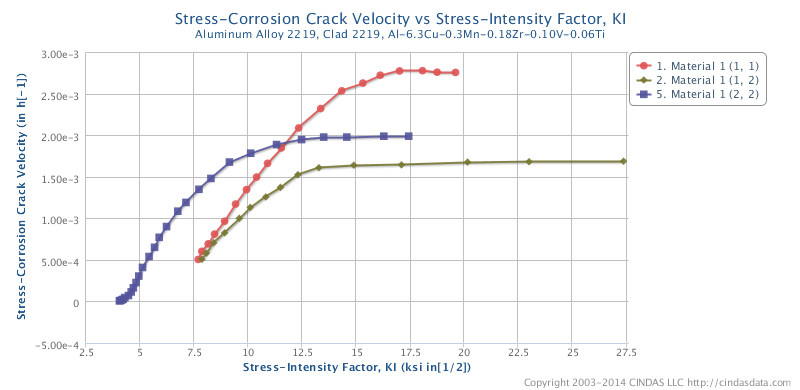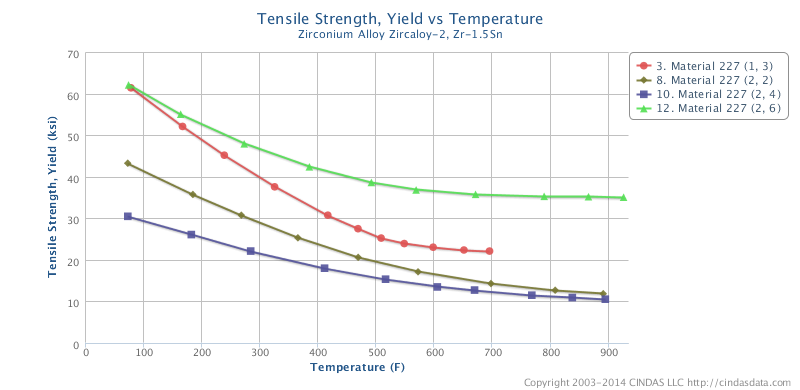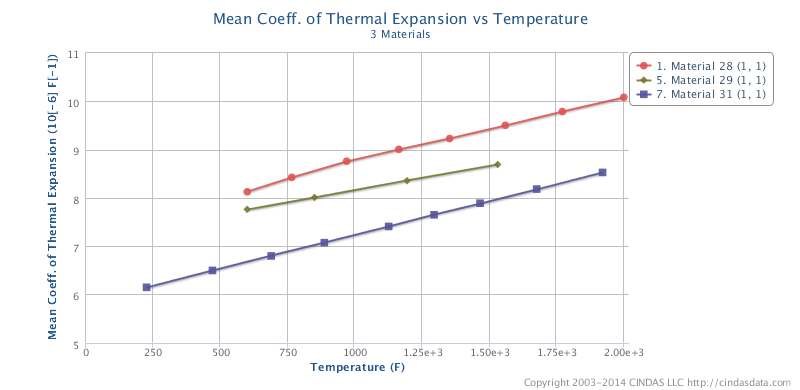Our Products
Aerospace Structural Metals Database
Aerospace and High Performance Alloys Database
High Performance Alloys Database
Cryogenic and Low Temperatures Database
Microelectronics and Composite Materials Database
Thermophysical Properties of Matter Database
Damage Tolerant Design Handbook
Structural Alloys Handbook
View product descriptions »
Updates
September 2024 - HPAD/AHAD: A new chapter on alloy SCF 19 has recently been added to the HPAD and AHAD databases. This chapter was authored by Rick Frank who recently retired after a 45-year career with Carpenter Technologies where he specialized in the metallurgy of wrought superalloys. Alloy SCF 19 is a nitrogen-strengthened austenitic stainless steel with Mo addition for improved stress corrosion cracking (SCC) resistance. The alloy is capable of exceeding minimum yield strength of 140 ksi in the warm-worked condition. Due to an excellent combination of SCC resistance, chloride pitting resistance, high strength and low magnetic permeability, it finds applications as a non-magnetic drill collar and as a Measurement While Drilling/ Logging While Drilling (MWD/LWD) housing alloy in some of the harshest oil and gas drilling conditions.
Resources
We have product descriptions, brochures, alloy sheets, and much more on our Resources and Learn pages.
View Resources »
View Learn »
View Resources »
View Learn »
Newsletter
Our newsletters include informative updates on CINDAS LLC as well as news from the materials world.
Read and Sign Up »
Read and Sign Up »
What we do:
CINDAS LLC provides critically evaluated materials properties databases for thermal, mechanical, electrical, physical and other properties of various materials including aerospace alloys. We provide web-based applications for searching and comparing continually updated data.The Aerospace Structural Metals Database (ASMD) is the industry benchmark for materials properties of high strength, lightweight alloys used in the aerospace and other industries.
The Aerospace and High Performance Alloys Database (AHAD) includes all data from the ASMD, as well as that in the High Performance Alloys Database (HPAD); the HPAD contains materials properties data focused on the specific needs of the high performance industries such as oil/gas, chemical processing, power generation, and transportation industries, and includes detailed data on corrosion performance and joining.
The Thermophysical Properties of Matter Database (TPMD) contains information on thermophysical properties.
In May 2021 CINDAS LLC introduced the Cryogenic and Low Temperatures Database (CLTD). It offers material characteristics in the cryogenic and low temperature ranges. The CLTD consists of thermophysical, mechanical, electrical and other properties of over 2,000 materials, mostly in the temperature ranges of 0 K to 273 K. Initial data is from both NIST data resources as well as CINDAS data.
Our latest materials properties database was introduced in December 2022: an even bigger database for microelectronics and composite materials, the Microelectronics and Composite Materials Database (MCMD). This database is the upgraded and expanded version of the Microelectronics Packaging Materials Database (MPMD). It contains everything previously in the MPMD (data and information on thermal, mechanical, electrical and physical properties of electronics packaging material) plus much new data on more than 200 composite materials, including ceramic matrix composites, both particulate and whisker reinforced as well as GLARE materials (Glass Laminate Aluminum Reinforced Epoxy also known as GLAss REinforced laminate). As of 1 January 2023, the MCMD replaces the MPMD.
Please try our free product demos of the web-based applications for the AHAD, ASMD, CLTD, HPAD, MCMD, and TPMD. To learn more about the individual databases, use the Products tab above.
Web-based database graphing functions include:
- Advanced material name or property based searching
- Interactive graphing capability
- Zoom feature allows more detailed viewing
- Coordinates highlighted when hovering over data points
- Unit conversion and logarithmic graphing
- Export graphs to JPG, PNG or PDF
- Full text descriptions of data














